How to easily remove furniture dents from rugs
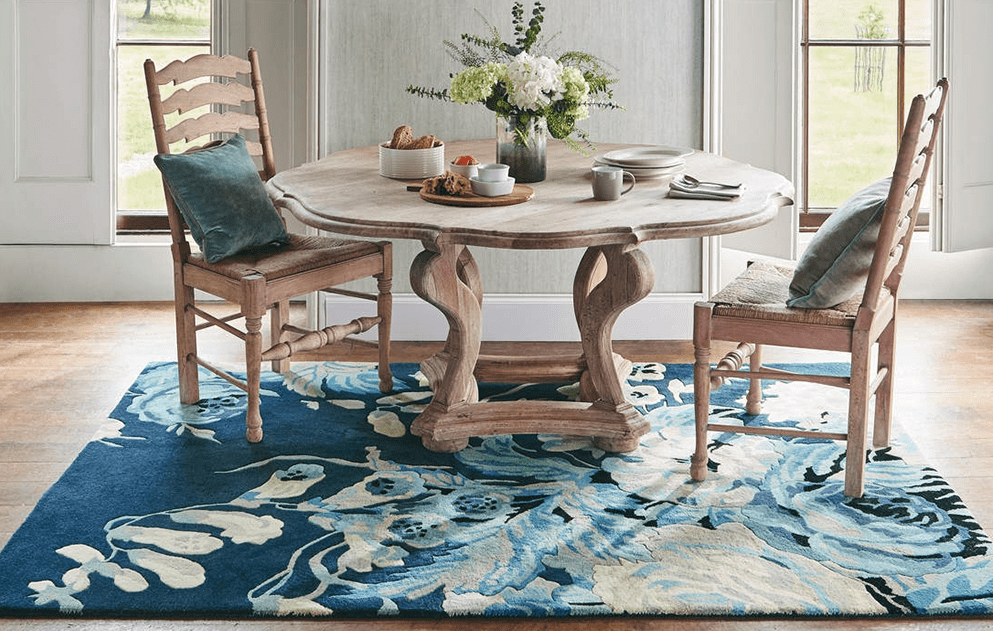
When you remove a piece of furniture from a room or rearrange the layout, you can end up with ugly dents in the rug where a chair or table once stood. The marks instantly draw the eye to the spot ruining the look of the whole room. Luckily these blemishes are not permanent, these rug and carpet dents can be easily removed with a few simple household items. It doesn’t take very long to get those unsightly marks out of your flooring.
What causes the dents in rugs?
These indentation marks are caused by pressure on the rug’s fibres. The weight of a piece of furniture compresses the fibres and flattens them down and changes the texture of the rug in these spots. The length of time the furniture has been in the same position, along with the heaviness of the item, will make a difference to how flat the rug fibres underneath have become.
How to get rid of furniture indentations on synthetic rugs
Before you start, take look at the label on the rug to identify what the rug is made of. If the label says the rug is made from polypropylene, acrylic or nylon, then it’s a synthetic fabric. Synthetic rugs are best treated using the ice cube method as follows:

Protect the floor beneath your rug by placing a towel underneath the area that needs treating.

Put a plain-water ice cube into the dent on the rug. If the dent is larger, use as many ice cubes as it takes to fill the dent.

Leave the ice cubes to gradually melt at room temperature. They should be left on the rug for at least 4 hours or overnight.

The ice cubes will gradually rehydrated the fibres and moistened them without soaking the rug.

Use kitchen paper or a clean tea towel and blot up any excess water drying the rug as much as possible.

Fluff the fibres up by gently combing them with a kitchen fork or your fingers. Don’t be too hard on the fibres or they will break and change the texture of the rug.
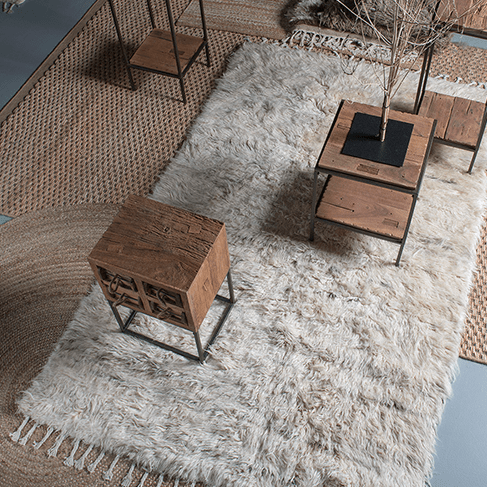
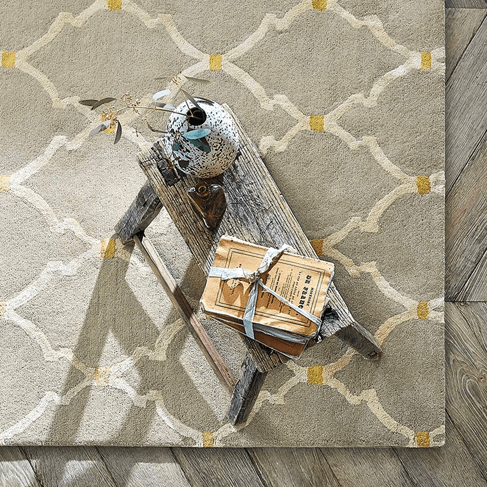
Natural fibre rugs can be treated using ice cubes too, but they also respond well to steam. Rugs made from wool, wool mix or cotton are natural fabric fugs. All you need is a normal steam iron.
1. Begin by placing a towel beneath the rug to protect the floor below from the steam.
2. Use a steam iron filled with water and set it on the highest heat so it produces the most amount of steam. Hold the iron around 10 cm above the dent in the rug and apply steam.
3. This process is not ironing the rug – it is applying hot steam to the dents without touching the surface of the carpet with the iron.
4. Continue to apply the steam for several minutes until the surface of the rug is hot and moist.
5. Fluff the fibres back into shape with a fork – do not use your fingers at this point as the rug will be hot. Ruffle the area of the rug firmly, but do not be too rough and break the fibres.
Alternatively, it’s possible to use a spray bottle and a hairdryer in a similar way.

Protect the floor underneath the rug by placing a towel below the dent.

Spray plain water from the bottle evenly onto the rug’s surface.

Use the hairdryer on the hottest setting. Hold the nozzle about 10 cm away and apply the heat until the surface of the rug is hot and moist.

Using a fork or similar object, fluff the fibres of the rug into shape.
If you have a silk rug, then it is best to get a professional to treat the carpet instead of tacking it yourself. The colours can run and the fabric can become damaged easier with silk, and as rugs of this kind tend to be more valuable, get someone to help you who has experience with this kind of fabric.
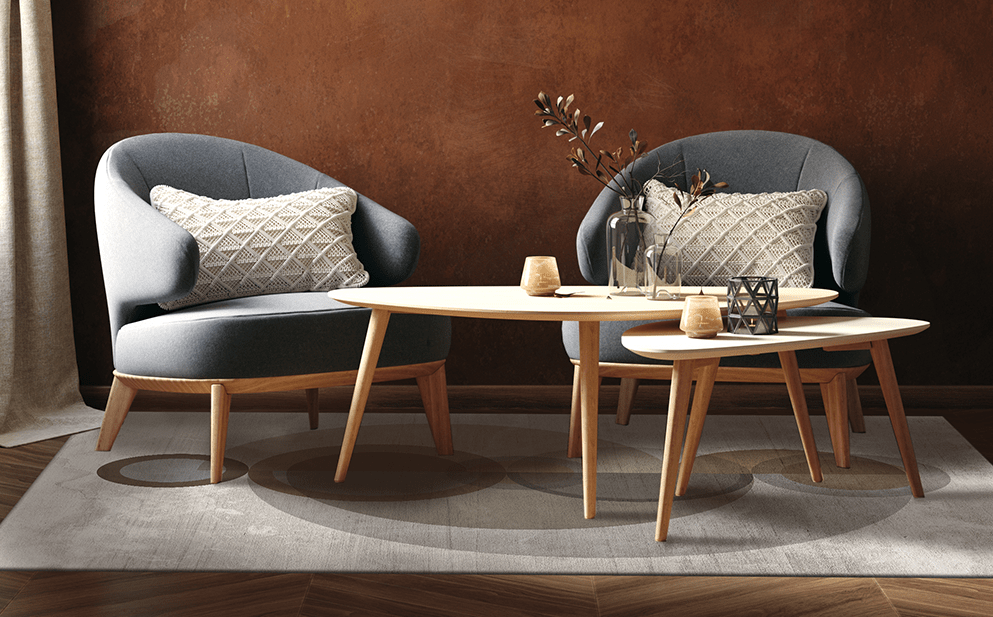
How do these tips work?
Rehydrating the fibres in the rug helps them to spring back to life. Reshaping the fabric of the rug using a fork, fingers or even a spoon helps to fluff up the flattened fibres too. The combination of both of these actions will return the rug to its former glory.
How to prevent dents appearing in a rug
There are a couple of things you can do to stop dents forming in a rug or carpet. First of all, move the item of furniture slightly every few weeks – just a few centimetres will do. This will stop the fibres from becoming too compressed with the passing of time. Another thing you can do is put something under the legs of the furniture to cushion the weight. There are purpose-made furniture cups available that distribute the weight of the item. These can be rather ugly to look at, but work well on beds or armchairs that have hidden feet. You can make smaller, neater protectors out of pieces of felt that will become invisible if you cut them to the exact footprint of the item. This works well with a table, for example, when the legs and feet are clearly visible.
Regular moving of the furniture with a thorough vacuuming will help. The fibres will be reshaped by the vacuum each time which will slow the flattening of the fibres.
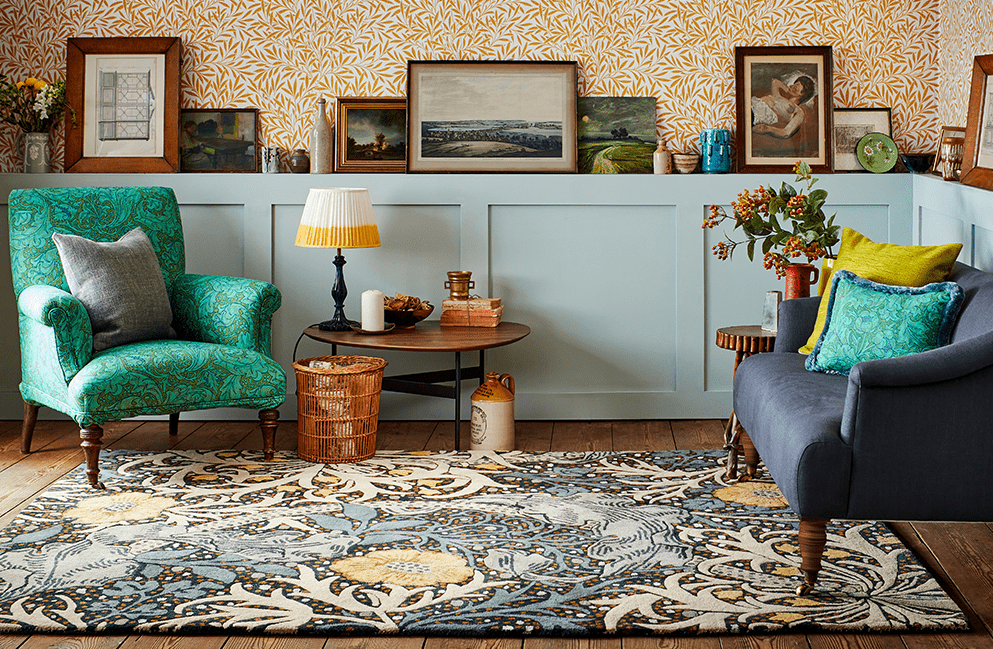
View and order below
the featured rugs in this article

Empire
Trellis Stone
SANDERSON
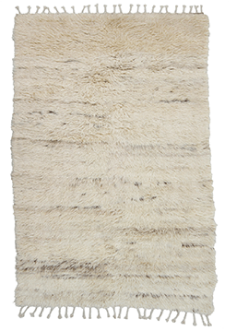
DFeel Good
Afghan
BRINKER

Stapleton Park
Admiral Blue
SANDERSON

Seaweed Teal
MORRIS

Dancer 0030 Guara Red
Brown
JACKIE & THE FISH




